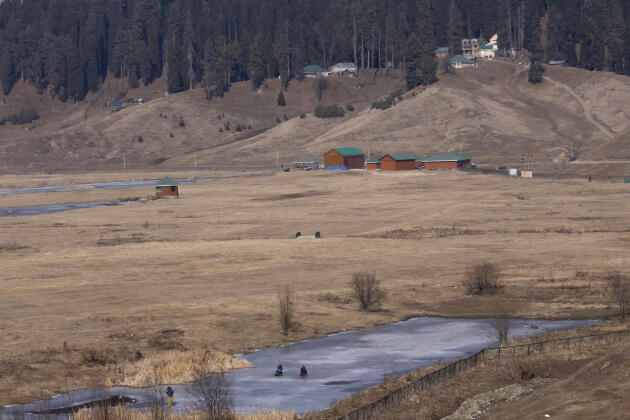Prayers organized a few weeks earlier in the valley’s mosques finally seem to have been heard. The first snowflakes of the year finally fell in Kashmir on Friday, January 26, ending a drought of almost two months. Five centimeters began by covering the slopes of Gulmarg with an elegant coat of white, while this Himalayan ski resort offered a sad landscape of arid lands for much of the winter.
Located at over 2,600 meters above sea level, Gulmarg is one of the largest and highest resorts in Asia, attracting thousands of skiers from all over the world every year to enjoy the powder. The mountainsides are usually covered in snow from December to March.
But this year Kashmir is affected by a severe drought. “We haven’t had a winter like this in a hundred years”, believes Shahid Rasool Thoker, manager of the Gulmarg Ski Club. In December, the precipitation deficit recorded was close to 80% compared to the previous year, according to official figures. Hotels are experiencing cascading cancellations while the tourism sector represents around 7% of the economy of the Indian territory of Jammu and Kashmir.

“We preferred to cancel all reservations until February 10 because our customers will not be able to go to the slopes”, lamented Rais Bakshi, from Gulmarg Ski Resort, before the first snowfall. More than thirty ski shops remained closed this season. “The city’s magnificent outdoor ice rink, open from December to February, has not even frozen yet due to the unseasonably high temperatures”, insists this tourism professional. Temperatures were particularly high in January and exceeded seasonal norms by an average of 6°C to 8°C.
More frequent and more intense
“If the snow falls, I will be the happiest person on earth”, assured Mukhtar Ahmed, head of the meteorological center in Srinagar, the summer capital of Kashmir, a few days before his forecasts materialized. Rainfall is expected to continue until February 4. Unfortunately, nothing to save the season. “This is a temporary relief that will not compensate for the drought experienced in recent months”regrets the specialist.
Experts believe that these unusual weather conditions are linked to global warming. These phenomena are expected to become more frequent and more intense in the future with catastrophic effects on water resources. According to a 2020 report from India’s Ministry of Earth Sciences, the impact of global warming in the Himalayas and Kashmir is expected to be particularly pronounced.
You have 45% of this article left to read. The rest is reserved for subscribers.
